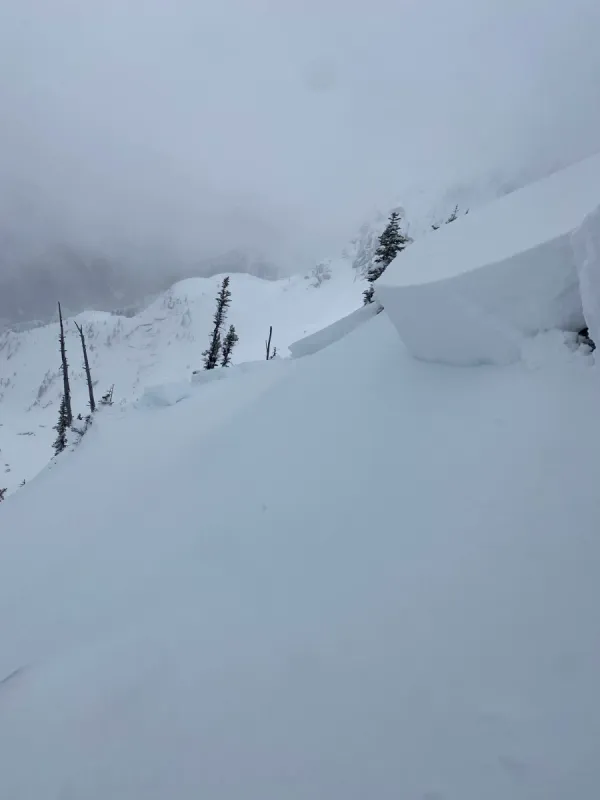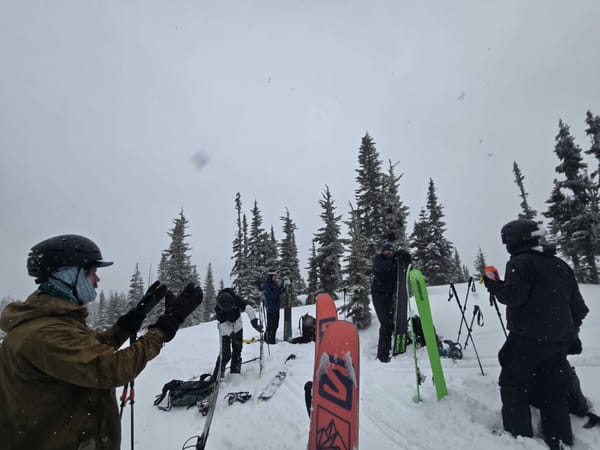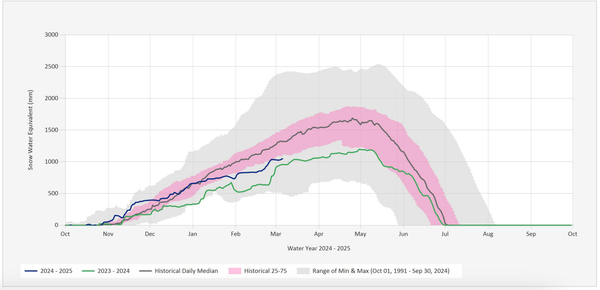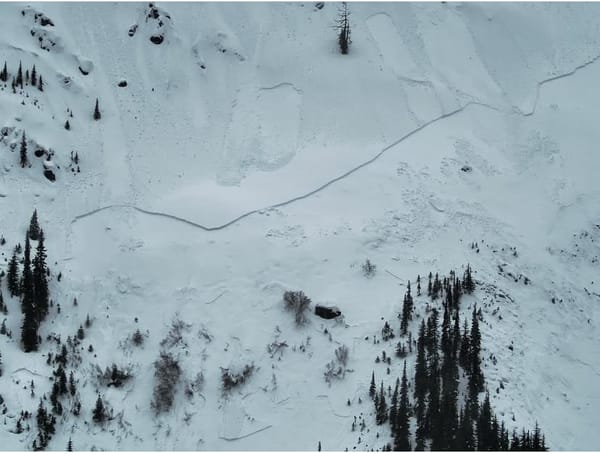Early Season Turns on Cheam
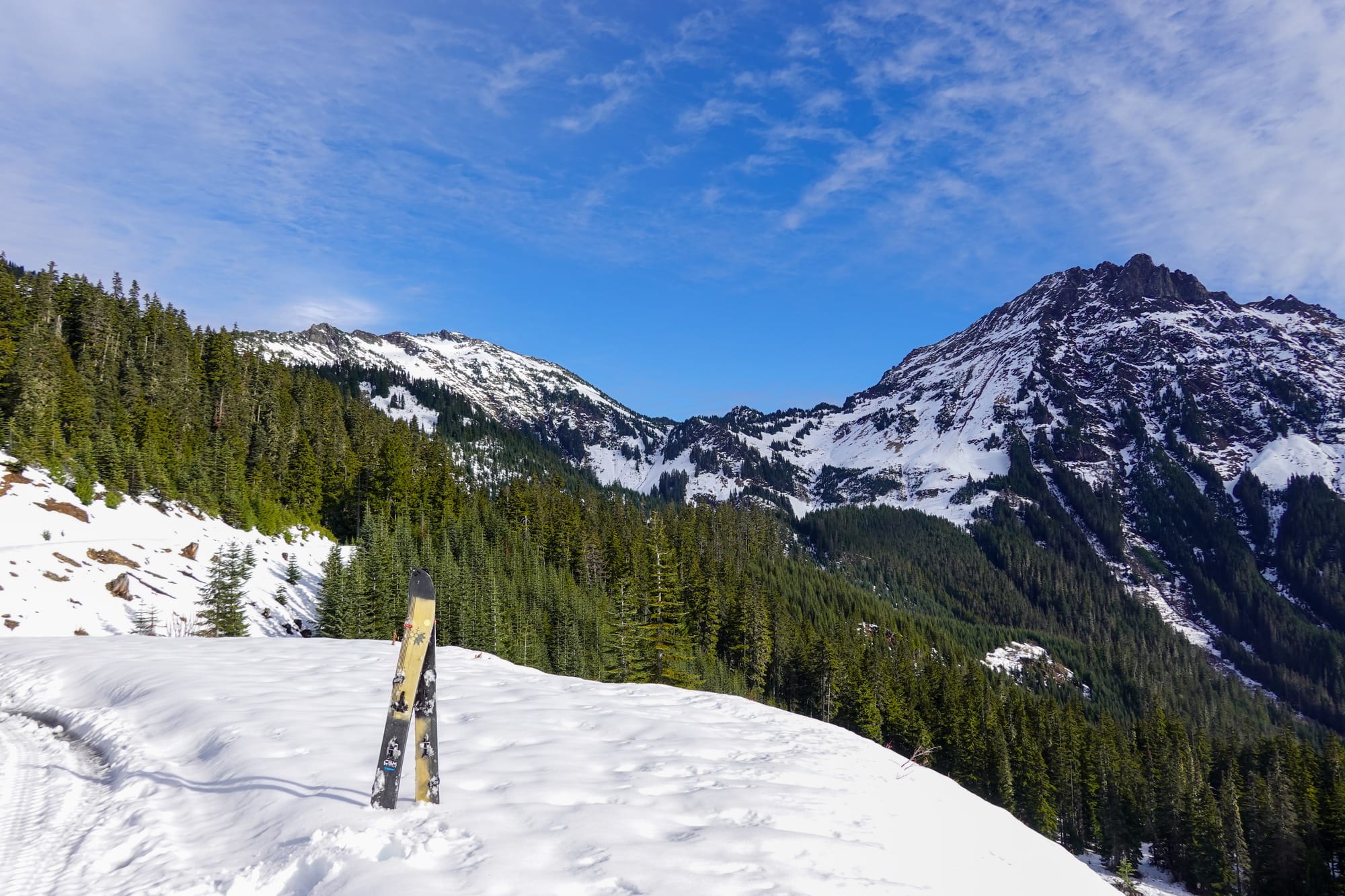
Last Friday, after a week of looking up at the Cheam Range on clear days, I finally got out for a first tour of the season. I had pretty low expectations, which was good because conditions were still very marginal. That being said, I still got some turns which, for early November, is still a win in my eyes.
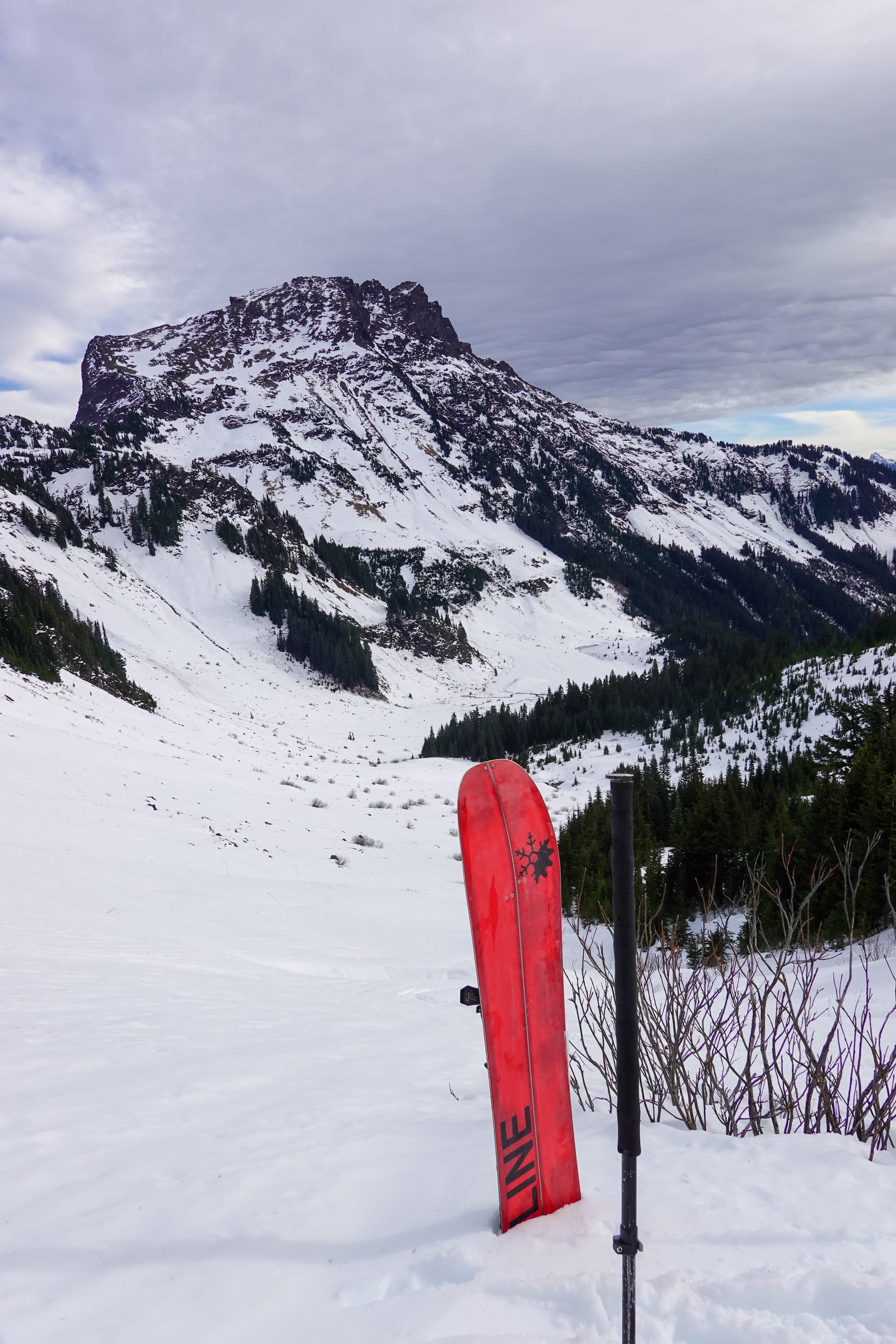
I was able to drive to 1350m with a high clearance 4x4 with good tires. Some other vehicles had made it further – to around 1400m – but I wasn't sure I could easily turn around if I kept going. There was about 30cm of well consolidated wet snow on the road with a few washouts where I had to take my skis off, but otherwise was able to skin up to the Cheam bowl pretty easily. On the mountain snow depths ranged from 40-60cm of heavy, consolidated snow up to 1800m, which makes sense given the sunny weather and warm temps last week.
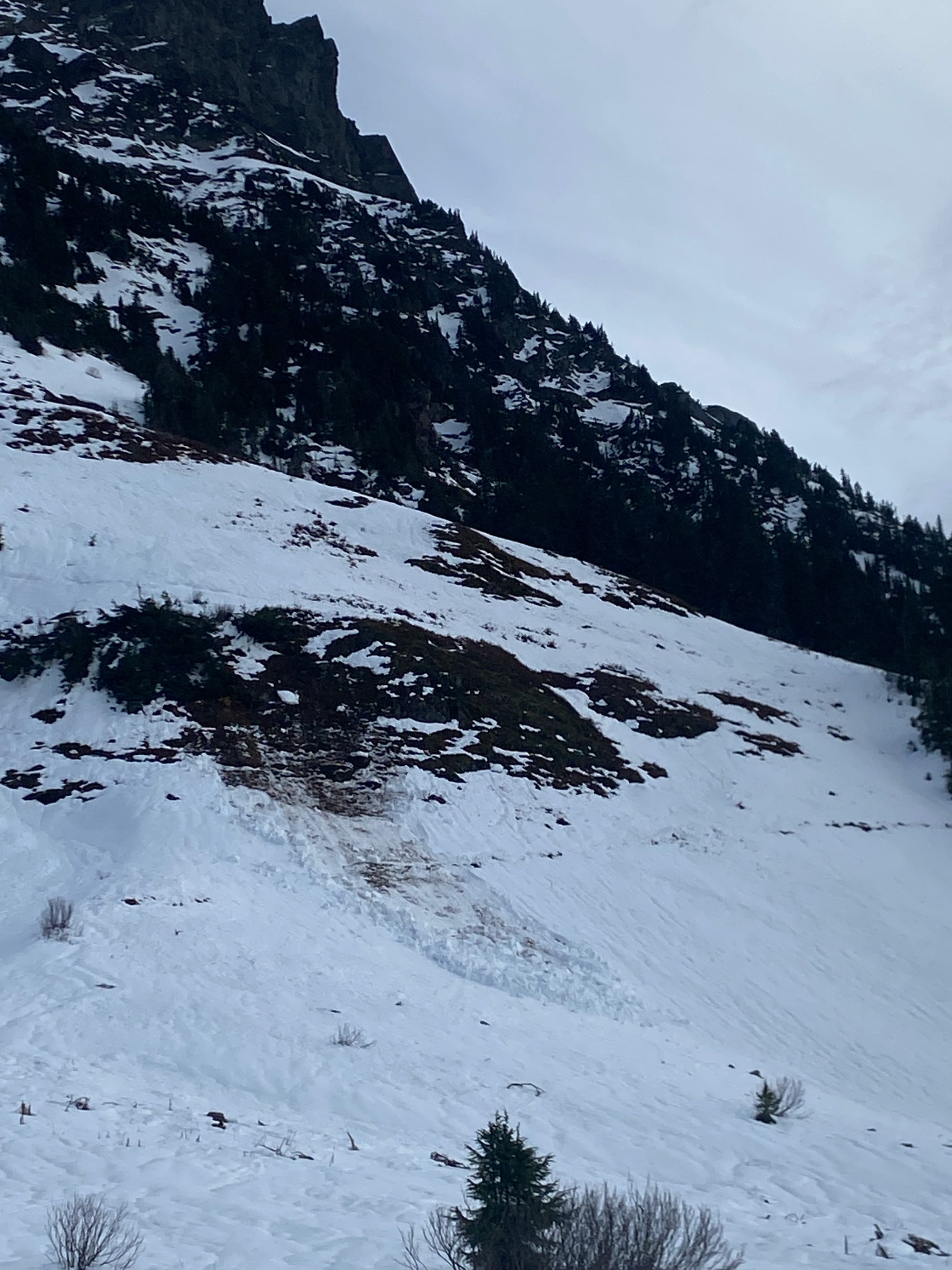
There was widespread natural avalanche activity, mostly small loose wet point releases from steep rocky terrain. A few wet slabs had also run on the ground. Early in the day shaded areas had a thick sun crust, but it was starting to break down by the afternoon.
What's Happened Since Then?
After last week's warm weather, the local mountains have seen a lot of precipitation. Looking at weather stations it appears the first pulse over the weekend came in as mostly rain up to at least 1700m. It also likely brought more snow to the upper alpine elevations.
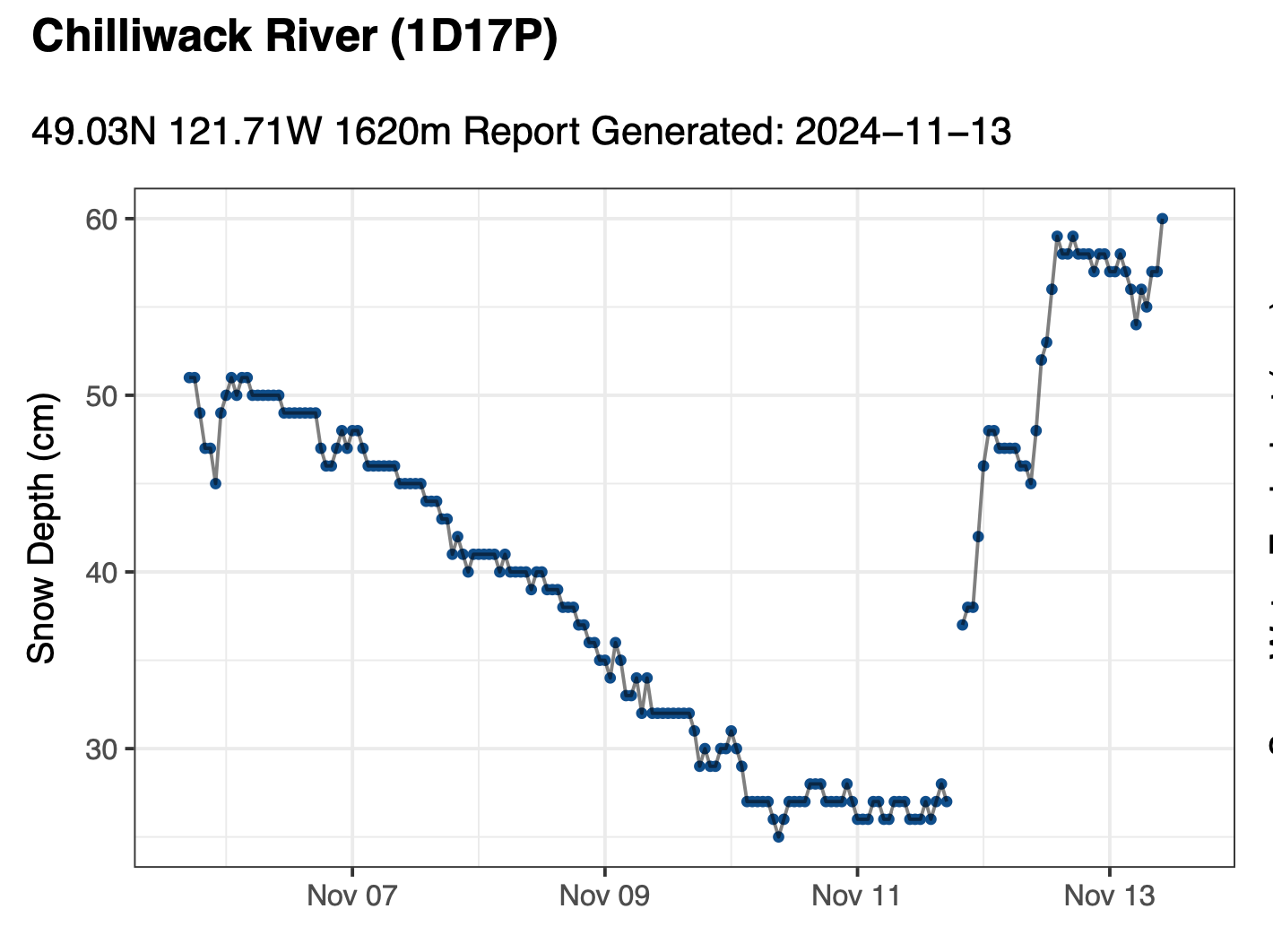
Since then, freezing levels have dropped and precipitation has increased. We've seen small accumulations down to highway level in Manning Park and on the Coquihalla Summit. Higher on the mountains weather stations are reporting at least 30cm of new snow with more on the way.
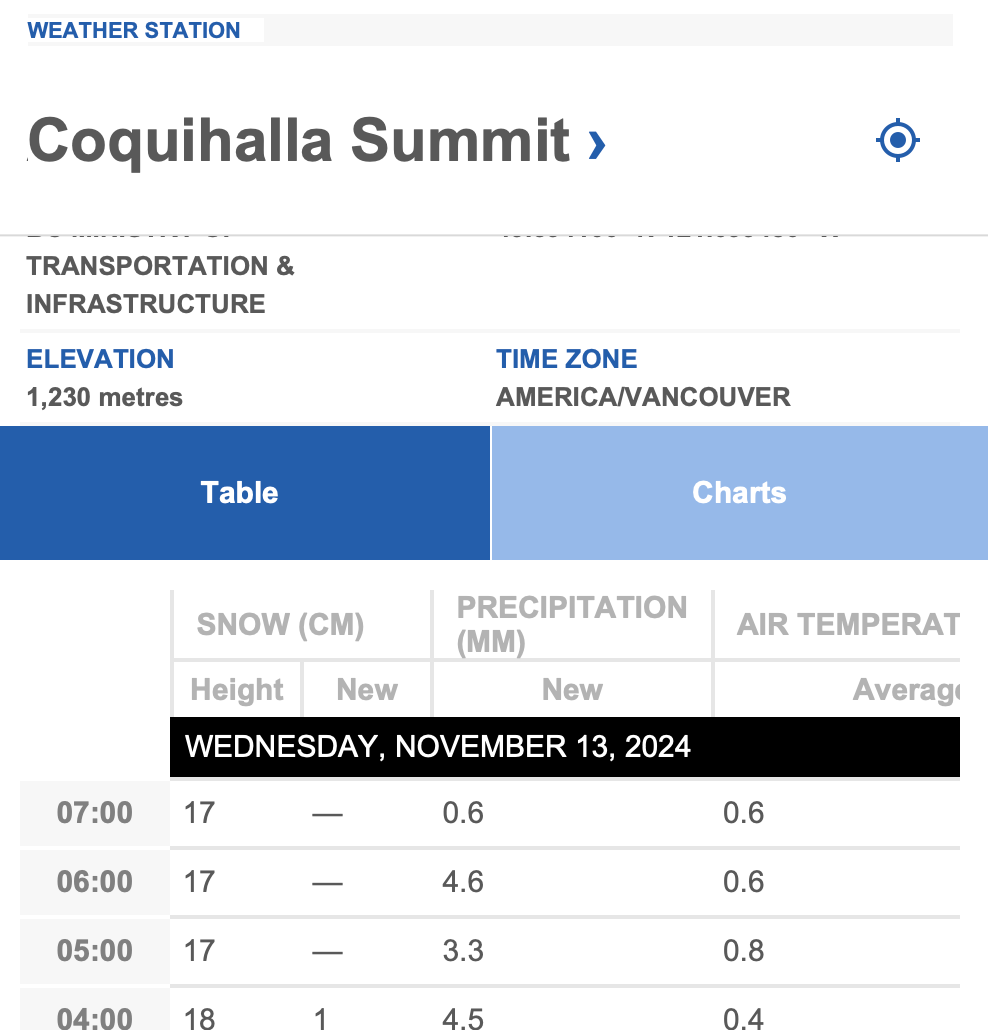
What are we thinking about?
First and foremost, we're still very much in early season conditions. What's just beneath the surface of any fresh snow is top of mind, if you didn't read our last post on managing early season conditions, check it out here.
Second, we're getting a lot of wet and cold weather these days. That's great for building our snowpack, but it's important to remember that the snowpack is often the weakest and most avalanche prone just after a storm. So be careful not to be lured into dangerous terrain just after a storm, especially if we get those precious windows of good, clear weather.
It's also important to think about what snow is falling on. We sometimes call this "surface roughness" but basically it means that open, smooth areas like meadows, glaciers and snowfields will fill in with snow faster than rocky, tree covered or alder choked slopes. This heavy wet early season snow is great for setting up a base, but depending on the surface roughness, it could still be a while before we see enough snow to ski in a lot of areas.
In those more open areas where turns are possible right now, one of the biggest questions I have is about the bond forming between the new snow and snow below it. When I was out on Cheam last week I found a widespread sun crust. This crust could be an ideal bed surface for avalanches if it didn't break down before the new snow arrived. If I get a chance to head out, I'll be investigating this layer.
I'll also be taking a look at what kind of avalanche problems are present in the new snow. We've had significant precipitation and winds all this week, so the chance of wind slab and storm slab formation is pretty high. If any of these terms are new to you, you want a refresh on what they mean, or you want to build more skills on how to investigate these problems in the field, check out our range of avalanche courses starting in December!
Avalanche Awareness & Trip Planning Event at Mt.Waddington's
On December 5th, Ascent Guides is hosting an Avalanche Awareness and Winter Backcountry Planning session at Mt.Waddington's Outdoors in Chilliwack. This session is part of a new "Mountain Town Workshop Series" we're hosting to complement our monthly speaker & film series. Each month we'll host a focused, small group workshop to build community and mountains skills. This event – running from 6:00-8:00 p.m. – will be a great refresher on avalanche awareness and a chance to dig into some of the tools we use to understand weather and conditions in the mountains. It's also a great chance to meet other backcountry users! Space is limited and tickets are $10. Click here to register.

